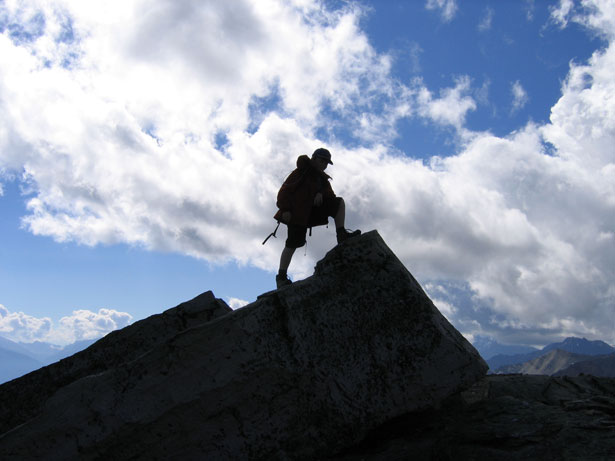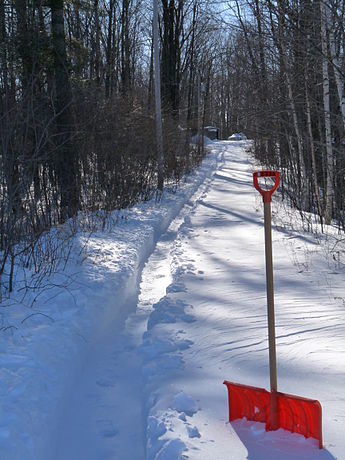Julie Entwistle, MBA, BHSc (OT), BSc (Health / Gerontology)
I am fortunate in my life to have vacationed to some pretty great spots. But my favorite remains our trip to Alaska in 1999. We travelled in August when the Ontario summers were hot and humid, and the air in Alaska was 16-18 degrees (Celsius) – clean, crisp, and fresh. Alaska is beautiful. It has mountains, oceans, wildlife, great people, and you can’t help but feel small when watching a glacier, three miles high, calving off chunks larger than your cruise ship. We hiked, biked, toured the local shops, and took the White Pass and Yukon Railroad along the gold rush trail back into Northern Canada. We walked a glacier and flew in a seaplane along the fiords. Incredible.
But my favorite part of all? We travelled with my grandparents, both disabled and in need of our help to fully enjoy the experience.
My grandfather was diagnosed with polio in 1946. He spent three years in hospital and rehabilitation, and was discharged with “Canadian crutches” having no muscle in his legs or buttocks. His bones were essentially stilts, with some active tendons that would let him swing his legs through and lock his knees so he could mobilize. He had lots of falls walking this way, most resulting in a broken something. My grandmother was physically healthy, minus some arthritis, but suffered from hearing loss. My grandparents had always talked about going to Alaska and thanks to my parents, who included us in the experience, we were able to make that happen.
Travelling with a disability is not easy. It requires planning, a supportive attendant, and an open mind. Our cruise ship was “accessible” which turned out to be a blanket term for “we try”. After all, nothing can be fully “accessible” as each disability is different, requiring varying levels of accommodation. Because my grandfather could transfer to standing, and was tall, he needed things higher – toilets, chairs, beds. Well, when they make things “accessible” they often lower them – to accommodate a wheelchair user who does not stand to transfer. Walking around a cruise ship deck (slippery from damp sea air) was not safe for my grandfather, so he would use his scooter most of the time. But the best was the gangways. We would dock in the morning, and the gangway was nothing more than a simple bridge. Easy for a scooter to manage. Well, six hours later, the tide comes in and the gangway becomes a steep incline, completely unmanageable by scooter. We didn’t realize that until we were at the bottom looking up. We had packed a manual wheelchair as well, so we were able to move my grandfather into that, some burly men essentially carried him up the steep incline (not safe, but the boat was leaving regardless), and another group of men carried the scooter. We managed, but we had help and a cruise line that was interested in providing some customer service.
March break is approaching and for months my clients have been asking me about travelling with a disability. I enjoy these discussions because I do believe that anything is possible – but here are some pointers:
1. Book the trip with a travel agent who specializes in disability, either by interest or circumstance (some have disabilities themselves), if you can. These agents understand that “accessibility” is not an inclusive term, and with personal experience, or feedback from other patrons, they can customize the trip to meet the needs of your unique situation. Check out www.accessholidays.ca as an example.
2. Planning goes a long way. Send pictures of your equipment, measurements, and get pictures and measurements in return. Disclose the nature of your disability if you are comfortable with that, and be clear about what you can and cannot do.
3. Travel with an attendant. On our Alaskan trip there was a man from our town also on the boat who had a mobility impairment. He did not have an attendant with him and was constantly asking other patrons to help him. They were willing to comply, but at times his needs were not met, and it would have been best for him and the other travellers if he had someone with him who understood these and was trained to assist him with the same.
4. Look at all your equipment options. Can you rent something smaller or lighter that might be easier to lift, will fit into narrower places, or can you rent devices when you arrive? I just provided a client with photos of devices, different from the ones he uses daily, that he could consider renting to facilitate his upcoming overnight to a waterpark with his children.
5. Become informed. Check out the government resources. Did you know that in Canada, if you have a disability and are flying domestically, you may be eligible for extra seating, support, or your attendant can fly for free? Learn more from Westjet. Or that Easter Seals offers a Disability Travel Card for buses and trains? Also, if you have a disability and require someone to assist you through an airport to the gate, or at the gate through security and customs, there are special passes that can be obtained for this. In Florida there is a rehabilitation program for people with spinal cord injuries that includes “project airport” and this takes wheelchair uses through an airport, onto a plane, and helps them understand how they can successfully manage this despite a physical impairment. Many magazines (Abilities www.abilities.ca for one) often has articles on accessible travel and these highlight many different places that are great to visit, and some of the things to think about before you leave or when you arrive.
6. Talk to an Occupational Therapist. Occupational therapists have a wealth of knowledge about how people with different conditions can adapt their environment or equipment to manage. Consider seeking our expertise if you are embarking on a journey outside of your typical space. Together we can discuss strategies and solutions that can help ensure your vacation is successful.
I miss my grandfather dearly but am blessed to still have my grandmother in my life. Our trip to Alaska served many purposes – we were able to see a beautiful part of the world, my grandparents got to fulfill a travel dream, and I made memories with them that span far deeper than any photograph.
Safe travels!





